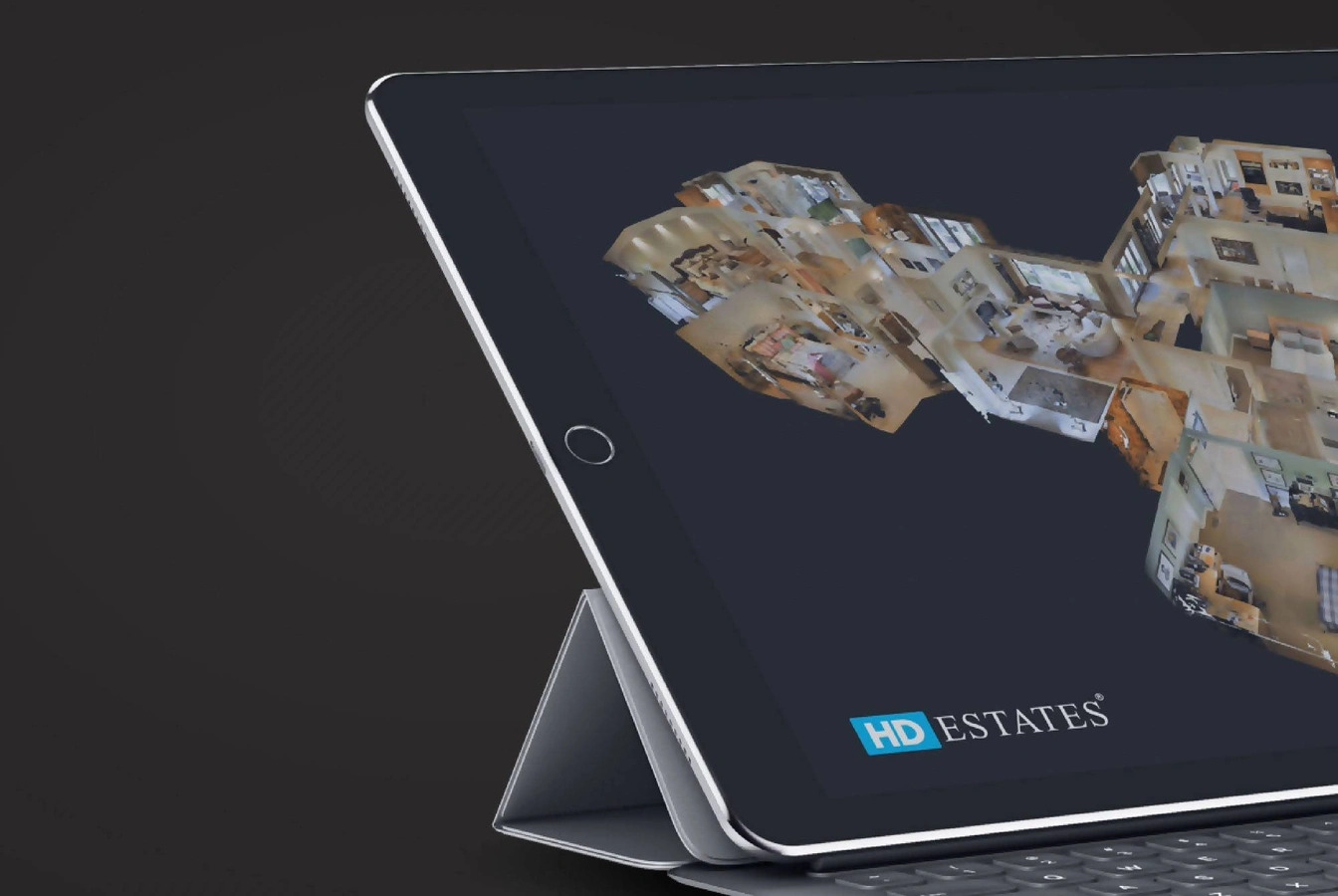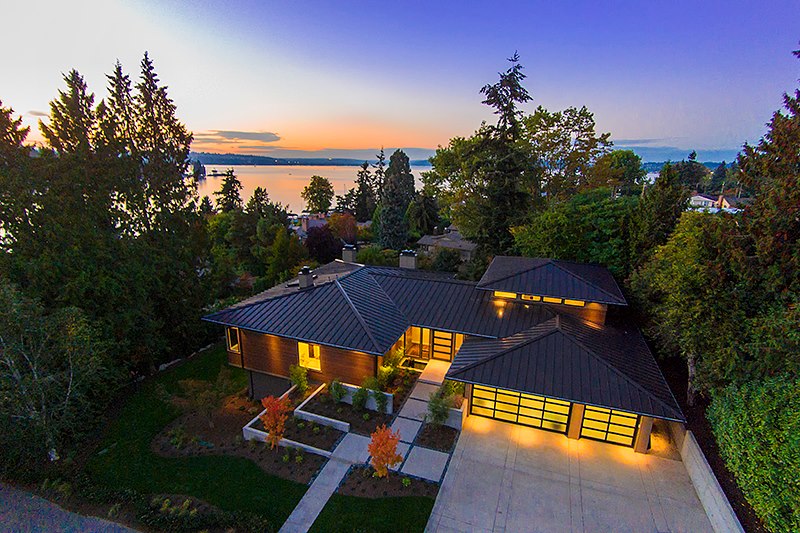In a fast-paced and ever-changing industry like real estate, agents and professionals must invest in digital transformation to stay ahead of their peers. Among the cutting-edge technologies that enable real estate agents to expand their reach and engagement is 3D scanning technology.
A previous post entitled ‘Why Real Estate Agents Should Invest in High-Quality 3D Scanning’ explains that 3D scans leverage the key trend of providing virtual reality tours, which enable agents to create digital twins of properties and save time by letting buyers explore online. In addition to saving time, money, and other logistical resources on in-person property tours, 3D scans through Matterport technology also drive buyer interest and click-through rates through their immersive, realistic, and professional-looking visuals.
In addition to 3D scanning technology, smart glasses are another tool worth looking into to accelerate real estate digital transformation. By integrating wireless connectivity, visual displays, and other advanced features into eyewear, smart glasses offer countless applications that can be integrated into real estate photography, tours, and overall property management. Continue reading to learn more about smart glasses’ capabilities and how these can be applied in the real estate industry to maximize efficiency, reach, and engagement.
A brief look at smart glasses
As previously mentioned, smart glasses deliver advanced functionalities beyond traditional eyewear through features like Bluetooth and Wi-Fi support, wearable digital displays, and built-in cameras, speakers, and microphones. Google was among the first manufacturers of smart glasses, as the tech giant brought the concept into reality through the Google Glass Explorer Edition in 2013.
Since then, other tech companies like Apple, Meta, and Amazon have released their own innovative takes on smart eyewear. On top of wireless connectivity and multimedia support, recent models are packed with more advanced features like augmented and virtual reality (AR/VR) and artificial intelligence (AI), which are also increasingly becoming common in the real estate industry. In the next section, we outline how real estate professionals can utilize these functionalities to enhance the experience for agents, homebuyers, and other relevant stakeholders.
Benefits and use cases of smart glasses in real estate
Offer virtual property tours for efficiency
In the previously linked post, 3D scanning technology was identified as an effective tool for bringing real estate properties into the digital realm and allowing homebuyers to tour them virtually. Likewise, next-generation smart glasses can scan and display digital twins of properties through extended reality (XR) support, as demonstrated by Android XR, which is Google’s XR software for smart glasses.
Its AR capabilities can overlay interactive virtual objects like furniture and decor in the real world, while its VR features can conduct virtual walkthroughs of properties to save costs on in-person viewings. As such, real estate agents can invite prospective homebuyers to try on smart glasses and tour as many properties as they want without having to physically travel from one location to another.
Engage clients with immersive property viewings
Aside from offering virtual property tours, real estate agents can also invite their clients to remote property viewings, which entail going to the property on their behalf and guiding them in real time through video conferencing technology. In this case, the Ray-Ban Meta smart glasses, included in OPSM’s online Ray-Ban sunglasses selection, enhance the immersive experience by letting agents utilize its ultra-wide 12MP camera for high-quality panoramic videos with a first-person point of view.
The tech-enabled eyewear is also equipped with a five-mic audio system to help agents take calls and communicate with their clients clearly during property viewings. The online retailer offers the Ray-Ban Meta smart glasses in lightweight frame styles like the signature Wayfarer for convenient and hands-free communication via audio and video calls and live streaming, ultimately boosting client engagement even when tours are done remotely.
Improve accessibility for clients with disabilities
Real estate agents must also prioritize the accessibility of their tours, especially for clients with disabilities who need additional assistance in navigating properties and accessing information about them. While virtual property tours already cater to the needs of clients with mobility issues that may prevent them from visiting properties remotely, smart glasses can also be an assistive tool for clients who are deaf or hard of hearing.
Case in point, the XanderGlasses from the Massachusetts-based startup Xander displays real-time captions on the glasses to allow deaf clients to hear what the agent is saying about the property during live tours and showcases. The speech-to-text technology is also built into the glasses and does not require Wi-Fi, thus being effective even in properties where internet connection may be unreliable or inconsistent.
Enable smart home integration for hands-free property management
Lastly, real estate professionals can utilize smart glasses to manage properties more efficiently, especially those with smart home systems for controlling and monitoring lighting, heating, energy consumption, and security. Amazon’s AI assistant Alexa can be integrated into smart homes for better automation, and the company has recently added this feature to its next-generation Echo Frames smart glasses. As such, property managers can use the Alexa-powered Echo Frames to control connected devices to the smart home system, such as home appliances, lighting, security cameras, outlets, and plugs.
Overall, real estate professionals must first evaluate which aspects of their property viewings and overall management can be improved upon to determine which exact features and smart glasses models can be incorporated into their marketing, customer service, and operations. Continue reading HD Estate’s blog posts for more information on real estate photography, videos, virtual tours, and more.






 Claire Wright, a savvy tech nerd and self-taught photographer who lives in Seattle and working at one of the best real estate photography companies called HD Estates.
Claire Wright, a savvy tech nerd and self-taught photographer who lives in Seattle and working at one of the best real estate photography companies called HD Estates.
 Claire Wright, a savvy tech nerd and self-taught photographer who lives in Seattle and working at one of the best real estate photography companies called HD Estates.
Claire Wright, a savvy tech nerd and self-taught photographer who lives in Seattle and working at one of the best real estate photography companies called HD Estates.